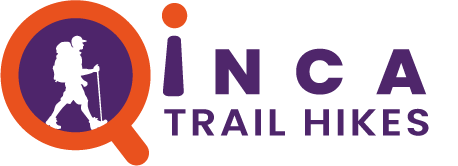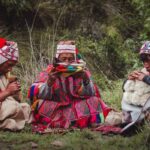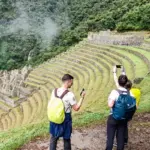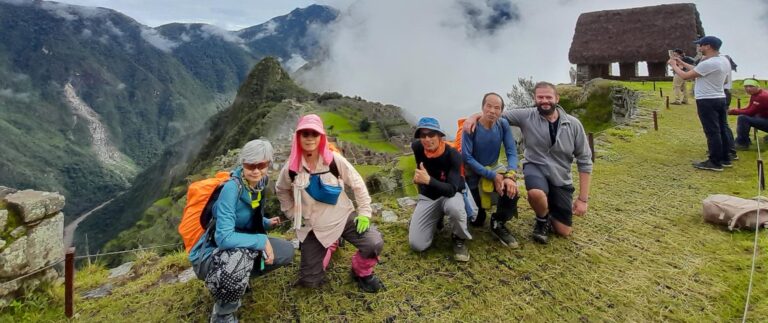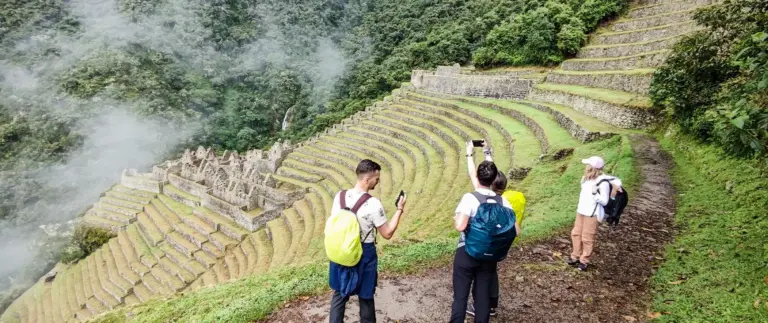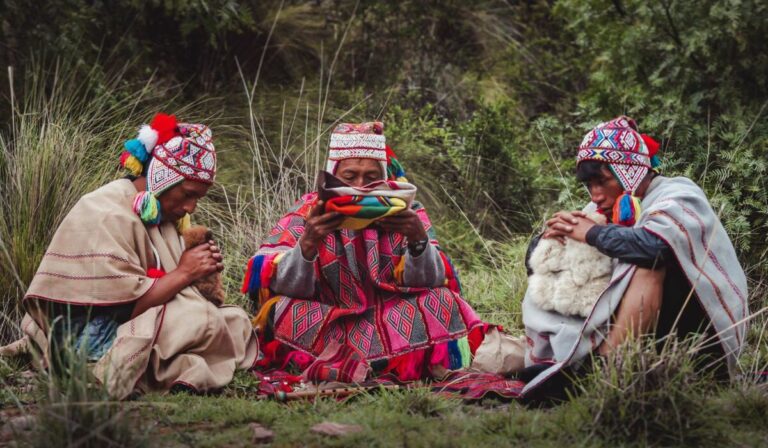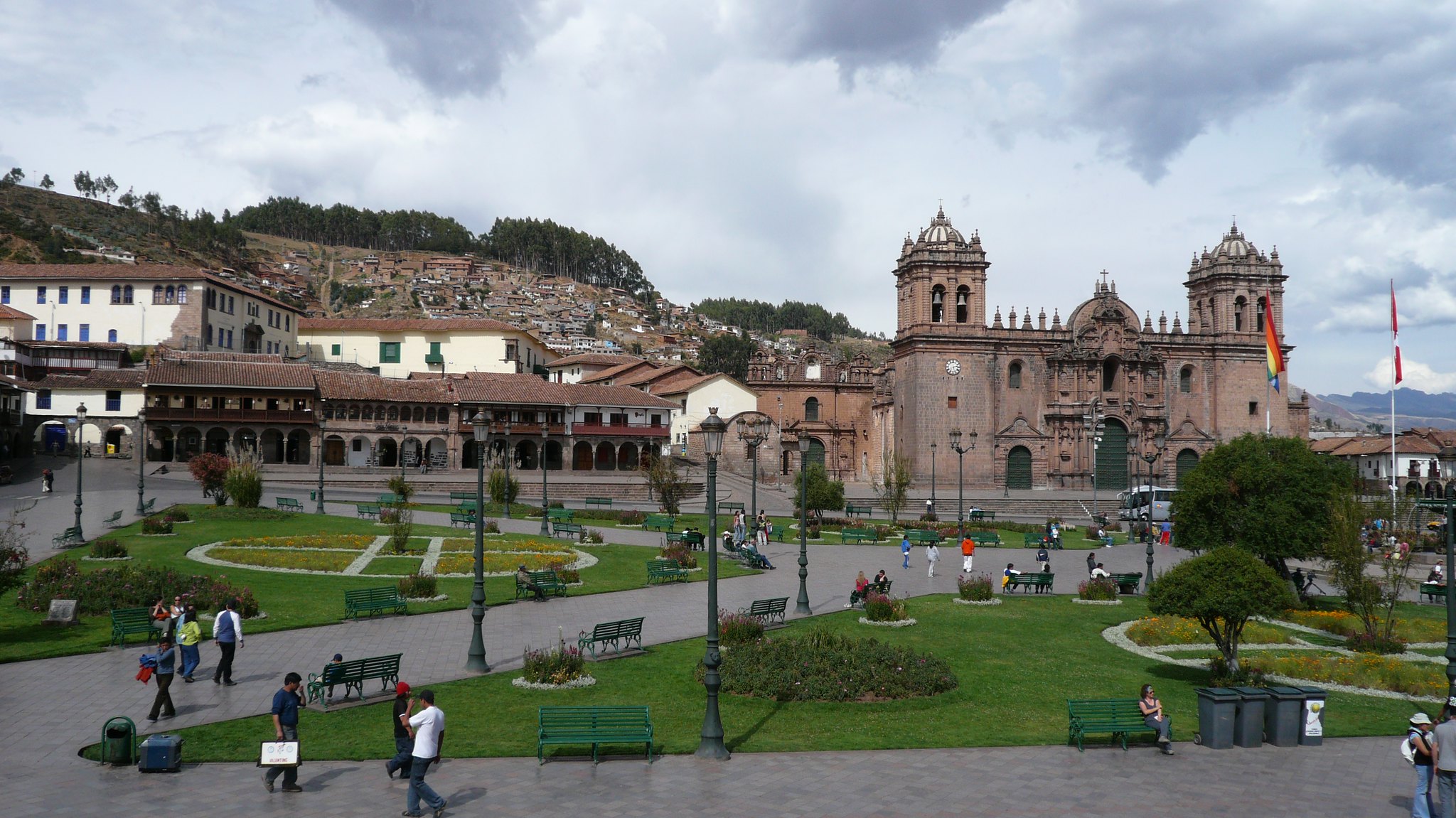
There are many museums to see in Cusco. Once the Inca Capital and the center of the Inca Empire. The Empire once was as large and widespread as Ecuador, Peru, Chile, Bolivia, parts of Argentina and a small part of Columbia. Many different cultures were absorbed into the Inca Culture making the Inca Empire complex and diverse.
When the Spanish arrived they distroyed the Inca Empire and with this the Inca record keeping system which was known as Quipu, which was a intricate series of knotted muliticolored strings. The Spanish almost completely destroyed this system. In addition to destroying the Inca culture the Spanish introduced disease to which the Inca had no defenses, this killed most of the special noble class called the quipucamayoc. The Quipucamayoc used the Quipu system, with them died the ability to use the system.
Today archeologists have no real records from the Inca to study. What we do have is reports in Spanish field journals and historical documents. Having no real ancient knowledge adds to the mystery of the Inca. Today we are left with finds from many different ethnic groups, pre Inca cultures and the Inca themselves with no true explantaion, so much remain unexplained.
Of the artifacts that still remain in Peru most are kept in museums. Because of the diverse, complex, and ancient history of the country there are many museums throughout Peru. Cusco is home to some of the richest cultural history in the country, so while you’re here don’t miss out on the must-see Museums in Cusco.
Inca Museum
The Inca Museum was established under the name of The Archaeological Museum of the University of Cusco in the 1920s. Today is part of the of the UNESCO World Heritage site of the City of Cusco. Most of what you see today are from University Library Museum and from the family of the Jose Lucas Caparo Muniz a lawyer and politician. This museum has one of the most extensive Inca Collections in the world. What you will see at the museum are displays ranging from pottery, metal work, textiles, mummies and much more.
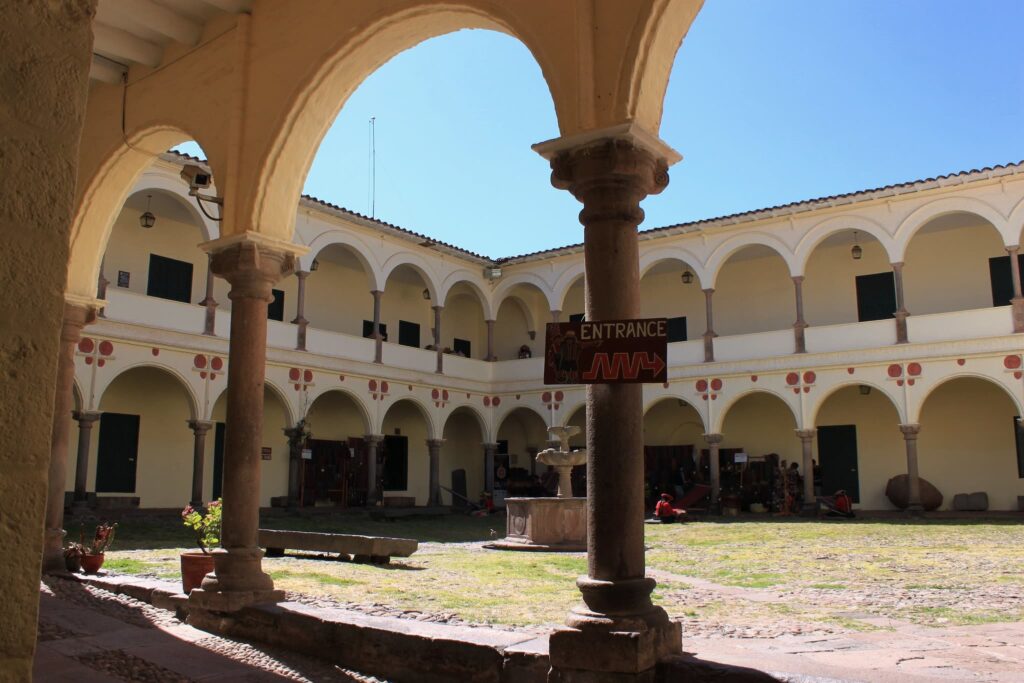
Points of interest
- Largest collection of queros: Ceremonial drinking vessel
- Mummies: Incan sacrifices to the gods
- Large Museum: One of the largest museums with many exhibits
- Incan and Pre Incan: Various artifacts from both the Inca and pre-Incan civilizations
- Guided tours: Spoken tours in Spanish and English are offered at an additional cost
***PLEASE NOTE: The Inca Museum has the largest collection of Inca Artifacts in Cusco and possibly the world.
How to get there
Getting to The Inca Museum is fairly easy, it’s only one block northeast of Plaza de Almas. Go to the Northeastern side of Plaza de Almas and find the street “Cta. del Almte”. Walk up the street for 1 or 2 minutes and The Inca Musuem will be on the courner right in front of you.
- Address: Ataud 154, Cusco 08002
Entry
- Operating hours: Mon-Fri 8:00 AM to 7:00 PM
- General admission: S/10
- Peruvian Nationals: S/5
- Students: S/5
Museum of Regional History
Located in the home of the famous writer Inca Garcilaso de la Vega is the Museum of Regional History. This is the biggest museum in Cusco. Here you will find in depth exhibitions that highlight the passage of history for the Inca for the region of Cusco. See exhibits from the Pre Inca Wari, Pre Columbian, Colonial and the modern age. The Musuem was founded in 1946, it houses a collection that was donated by the Concha Iberico family and also there many pieces from the Cusco school of Art.
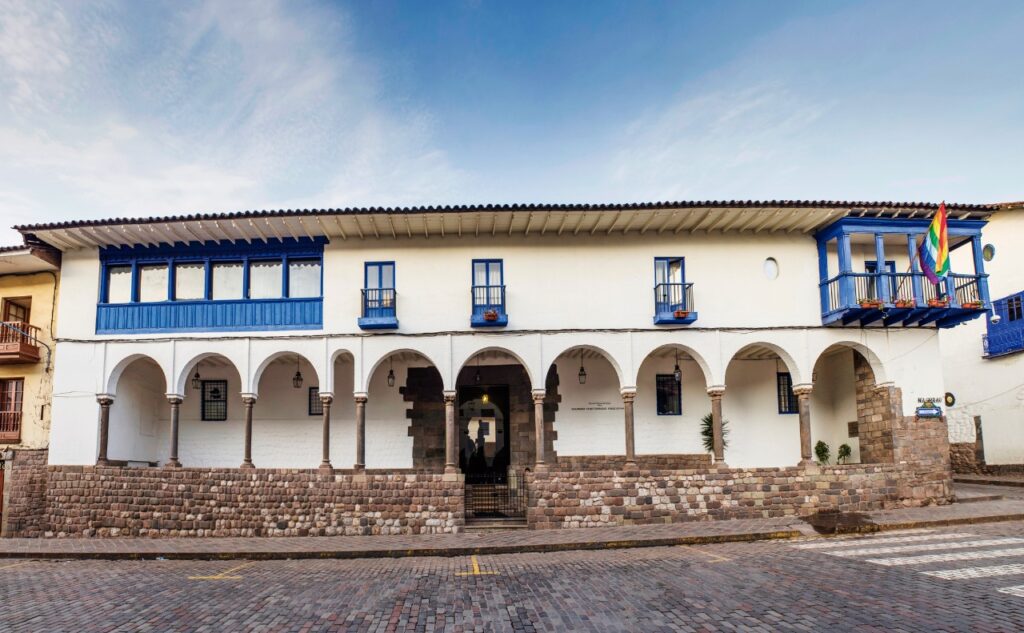
Points of Interest
- Large Museum: Large floorplan 1st floor regional artifacts 2nd colonial times in Cusco
- In-depth Regional History: A great way to see the passing of the ages
- Art on Display: Contemporary art from the Cusco School or art is on display
- Guided tours: Tours in Spanish and English are offered at an additional cost
How to get there
The Museum of regional History is located on the corner of Calle Garcilaso de la Vega and Calle Heladero near Plaza Regocijo. Only two blocks southwest of Plaza de Almas, walking there from Plaza de Almas takes a few minutes.
- Address: C. Garcilaso, Cusco 08002
***PLEASE NOTE: You cannot buy an entry ticket for only the Museum of Regional History you need to purchase a boloto turistico in order to enter
Entry
- Operating hours: Mon-Fri Holidays 8:00 AM – 5:00 PM
- Admission: Purchase of a boleto turistico is required for entry
Museum of Pre-Columbian Art
This impressive collection comes from the Larco Museum in Lima. In total there are 400 pieces on display in 10 different room. The collection is recognized internationally as the best of its kind. You must pass through all 10 rooms to get the best experience. The first room features early civilizations dating back to 250 B.C. Rooms 2,3,4 and 5 feature wood, shell, silver and gold. The remaining 5 are by civilization for example Paracas and Nazca, Mochica, Huari, Chancay and Chimu and finally Inca.
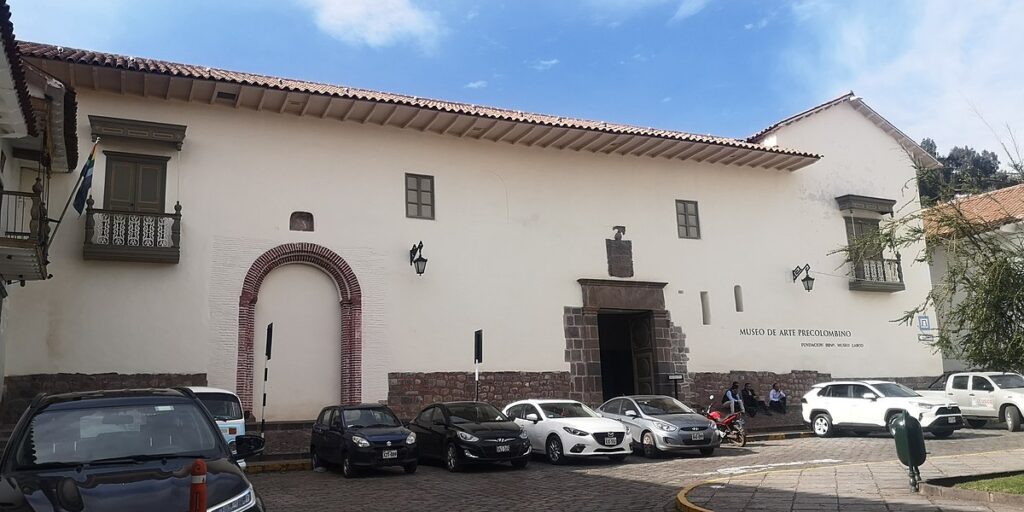
Points of Interest
- Extensive Collection: One of the largest Pre-Columbian collections in the world.
- Peruvian History: Pieces from all across Peru offer a great perspective into Peruvian History
- Audio guides: Audio guide devices in English, Spanish, and French
- Café Restaurant: Café and restaurant located in the central courtyard
How to get there
Close to the main square only three blocks away, it takes around 5 minutes to walk to the Museum of Pre-Columbian art from the main square. Located where Calle Nazarenas turns into Pumacurco on the Northwestern corner of Plazoleta de las Nazarenas. The museum is in the Historical Center of Cusco and is part of the UNESCO World Heritage Site of “Ciudad de Cusco”.
- Address: Nazarenas 231, Cusco 08002
Entry
- Operating Hours: Mon-Sun Holidays 9:00 AM – 4:00 PM
- General Admission: S/20
- Peruvian Nationals: S/10
- Foreign Students: S/10
- Peruvian Students: S/5
- Cusqueñas and Cusco Residents: Free from 9:00 AM – 4:00 PM!
Museum of Qorikancha
The temple of Santo Domingo is one of the grandest building in Cusco city, but did you know that it is built upon the most important Inca temple in Cusco, Qorikancha.
Qorikancha means The Golden Temple and is a great example of Inca and Spanish Colonial architecture. The Museum of Qorikancha is located underneath the grassy courtyard in front of the Qorikancha temple. Qorikancha is considered the most important holy structure in the entire Inca Empire and was dedicated to the worship of the Sun God Inti. All of the pieces on display in the museum are from the archeological excavation of Qorikancha. A small museum consisting of 5 rooms, there are various different ceramics, textiles, tools, weapons, and even some human remains including mummies. The main attraction of this Museum is Qorikancha itself. The temple is one of the most impressive pre-Columbian structures in the world. Remember to explore Qorikancha when you visit the museum.
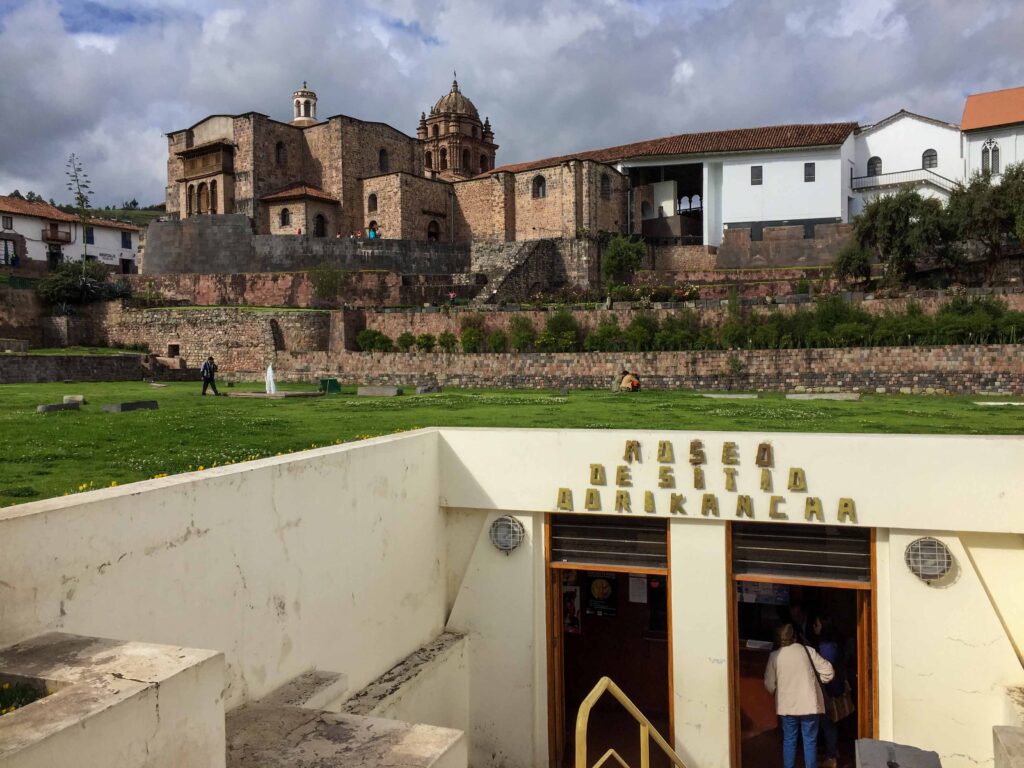
Points of Interest
- Temple of Qorikancha: Located under the temple of Qorikancha which is a must see
- Convent of Santo Domingo: Spanish Colonial church built on top of Qorikancha
- Mummies: Inca mummies discovered during the excavation of Qorikancha
- Guided Tours: Spoken tours in Spanish and English are offered at an additional cost
How to get there
Located on the corner of Avenida del Sol and Calle Arrayanniyoq 4 blocks from Plaza de it takes around 10 minutes to walk there from the center. When you arrive, see the magnificent temple of Qoricancha with a large grass field in the foreground. To gain access to the Museum you’ll have to go down below the grass field the entrance is hard to miss.
- Address: Santo Domingo s/n, Cusco 08000
Entry
- Operating Hours: Mon-Sat 9:00 AM – 6:00 PM
- General Admission: S/15
- Peruvian Nationals S/10
- Students: S/10
Museum and Catacombs of the Convent of St. Francisco of Assisi
The Convent of San Francisco is a church located in Cusco’s historic district. Built in 1572 the church was destroyed in the earthquake of 1650 and rebuilt in 1652. The convent was built in the shape of a cross separating the building into 4 “cloisters” or sections. The museum portion of the convent is comprised of two floors of the second cloister, the church, choir and antechoir. Inside the church there are many impressive paintings including the largest canvas oil painting in the Americas and oldest painting in Cusco, Genealogy of the Franciscan Order. The church also served as a cemetery and consequently there are catacombs beneath the church. Visitors can go down to the catacombs and see the skulls of some of the former San Francisco monks.
Points of interest
- Genealogy of the Franciscan Order: Oldest painting in Cusco
- Impressive Architecture: Romanesque and Plateresque style architecture
- Catacombs: Of all the churches in Cusco this is the only with human remains
- Choir: Made from finely carved cedar
- Library: More than 10,000 books
How to get there
The Convent of San Francisco is close to the center around a 5-minute walk. Located in the southern part of Plaza de San Francisco the Convent is 4 blocks from Plaza de Almas. Plaza San Francisco is on the corner of Calle de Santa Clara and Granada Street. Once you arrive at the plaza, you’ll see the large belltower of the church.
- Address: Pl. San Francisco s/n, Cusco 08001
Entry
- Operating hours: Mon-Sat 9:00 AM – 5:00 PM
- General Admission: S/15
- Peruvian National: S/10
- Foreign Student: S/10
- Peruvian Student: S/5
Cusco is one of the most culturally rich cities in the world. To get a good idea of what you are going to see visit a museum and you will get an idea of the complex history of the region. There is so much to see and do in Cusco with history on nearly every corner. So when you visit dont forget to include a musuem, this is a must to understand the ancient cultures of the region.
